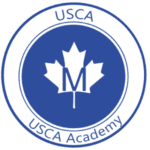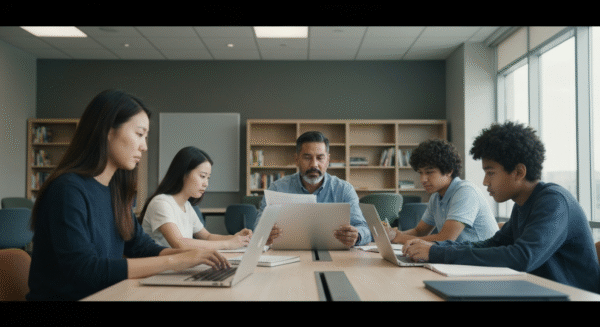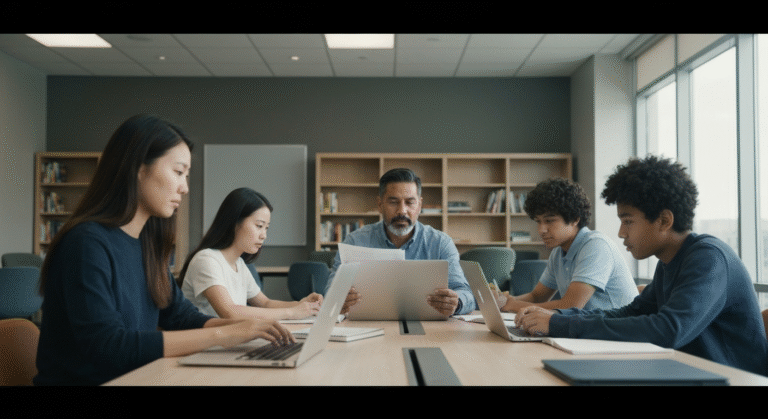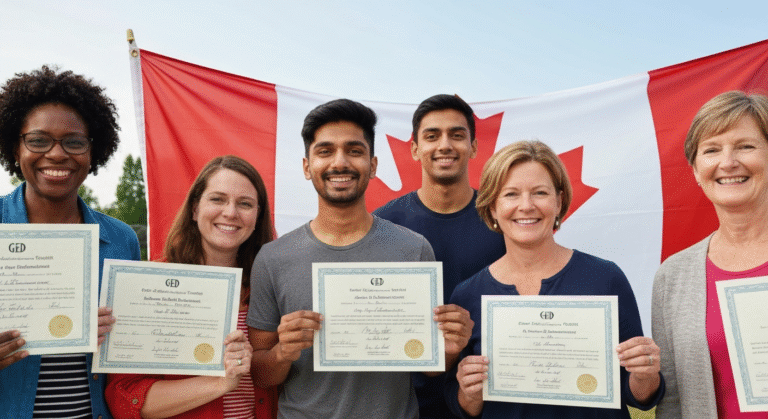Key Highlights of CHC2D Curriculum
- The CHC2D Curriculum guide for grade 10 and looks at Canadian history and world studies. You will learn about what happened from World War I until now.
- In this course, you use an inquiry process to find knowledge. You look at the evidence and see what happened. It helps you understand how events are linked together.
- There are four main units. You will learn about Canada’s social, political, and economic development. The course also makes you think about the ethical implications of their own choices. Each unit takes you through important conflicts and big changes that have shaped our society.
- This course focuses on building critical thinking and transferable skills. These skills will help you in your future work and studies.
- All tests and assignments follow Ministry of Education rules. The aim is to help student learning get better by using clear feedback and tasks that are different from each other.
Introduction
Welcome to the guide for CHC2D Grade 10 History. The Ministry of Education in Ontario made this course plan. You will learn about canadian history in this course. The lessons start with the year 1914 and go up to now. The course tells you about key things that happened and the people who helped shape Canada today. The CHC2D curriculum from the ministry of education is not only about remembering facts. By studying CHC2D Grade 10 History, you will see why canadian history is important and how it shows where you, me, and others belong in Canada right now.
CHC2D Grade 10 Curriculum Overview
The CHC2D curriculum course teaches you about canadian history from World War I up to now. You will see the big changes in canada, like the social, economic, and political developments. The course tells you about the impact of various individuals, and how canada’s role in the global community has changed. You will read about main events in canadian history. You will also learn how these events changed daily life for people in canada, such as the first nations, Métis, and Inuit groups.
A main goal of this CHC2D curriculum course is to help you get better at historical investigation. The curriculum expectations ask you to look at evidence, think about key issues, and notice big things in canadian history. You will also share your thoughts about what has happened in Canada over the last 100 years. Below, you can see the main parts and the main ideas for thinking in this canadian history course.
The Five Strands of the Curriculum

The CHC2D curriculum has five main sections that work as one group. The first part is Historical Inquiry and Skill Development. This part is the start of all the lessons to come. It teaches the historical inquiry process. You will work on how to ask good questions. You practice finding facts and then making conclusions just like people do who look into history.
The other four parts talk about the content. Each covers a subject area from a key time in Canadian history. You can use these to see curriculum expectations as they go with the time periods. The subject areas help you and your students get to know more about canadian history.
- Canada, 1914 to 1929
- Canada, 1929 to 1945
- Canada, 1945 to 1982
- Canada, 1982 to the present
This layout helps you take what you have from the first part. As you read, you learn about the main events and big ideas for each time period. You still work with the inquiry process to get to know canadian history better.
Historical Thinking Concepts
The CHC2D course is about more than knowing facts. It teaches some big ideas. These are called the concepts of historical thinking. The tools in this course help you look deeper into the past. They let you do more than just remember information. You will start to do real analysis of evidence and you will get to understand history in a better way.
You will see these key ideas in every unit and lesson. If you want to do well in the course, it is good to know them. Here are the main things you should pay attention to.
- Historical Significance: The, this, and that are things or people we feel be good to talk about. We pick who or what we say is important from long ago.
- Cause and Consequence: They look at why things happen and what people get from these things after. This is to see cause, and what comes out because of them.
- Continuity and Change: They look at what stays the same and what changes with time or in other year. It helps us know what keeps going and what goes away.
- Historical Perspective: You try to see things from how those people think to feel or know the world at their time. You look at past days with their eyes to see how they feel.
If you use the concepts of historical thinking, it gets easier to do an analysis of evidence. You also understand history in a better way. This can help you see any historical problem in a stronger way.
Core Units and Key Topics
The CHC2D course has four main units. Each one shows a different part of canadian history. In this way, you can see how events, changes, and big moments make canadian society what it is today.
Each unit comes after the last one, making it easy to follow the story of how Canada has changed since 1914. The course talks about environmental education, too. You can join the class online, or you can take part inside a classroom. All the units are easy to get. You can put them into an individual education plan. That way, every student can get good learning experiences, no matter their intellectual ability. It helps each one to do well. In the next parts, you can look at what is in each unit.
The course is here, and it helps you learn about Canadian history. You can take part in it and get good knowledge of this subject. It will make things clear for you.
Unit 1: Canada 1914–1929 (WWI and Social Change)
This unit tells you about a key time in canadian history, the First World War. It shows what began the war and what part Canada played in it. You will read about the battle at Vimy Ridge and see how people at home talked about conscription. The unit helps you learn how the war helped build a new canadian identity.
This unit shows the way fighting made the country change. You will learn about the battles. The unit talks about how people lived in the trenches and how their families dealt with things. It covers the changes in politics that came after as well.
You will see some propaganda posters, and read letters from soldiers. These things will help you feel what life was like back then. At the end, you will find out about the Treaty of Versailles. You will also see how the war changed Canada. This will help you know what happened after the war.
Unit 2: Canada 1929–1945 (Great Depression and WWII)
This unit talks about a hard time in canadian history. After some years of good economic growth, the Great Depression and the Second World War made big changes for many people. First, you will read about the Roaring Twenties. Then, you will see how the Great Depression began when the stock market crashed in 1929. You will get to know how these changes in the economy made life different for all Canadians. You will also learn about how the world war and the second world war affected daily life in canada.
The unit is about how the government faced money problems. It talks about what people did when they did not have jobs or lost money, like what happened in the Winnipeg General Strike. The unit shares stories of women, workers, and other groups. It shows how they spoke up for their rights when they got unfair treatment. With the country dealing with many financial matters and money problems, you can see how Canadians found ways to get through hard times.
The second part of this unit is about World War II. You will learn what events led up to the war. It tells how Canada took part both here at home and around the world. You will read about some tough times, like when Japanese Canadians were held in camps. This period shows how World War II made people around the world start to see Canada in a new way.
Unit 3: Canada 1945–1982 (Cold War and Social Movements)
After the world wars, Canada began to grow and change in many ways. There were new problems that came up too. In this unit, you will find out about life in Canada after the wars ended. The Cold War was not a real fight, but more like a battle of ideas. It had a big effect on what happened during this time. One thing you will see is how Canada took part in the Korean War.
Many people started living in new ways in the 1950s, 1960s, and 1970s. Family life began to be different. A lot of suburbs grew fast at that time. Young people brought new culture, and this showed in how they dressed and acted. There was a big fight for women’s rights, and it changed things for everyone.
Many important political events helped shape Canada. The Quiet Revolution in Quebec is one of them. Another is when Canada made its own flag. You will read how Indigenous peoples and new immigrants help make the country’s identity so rich and diverse.
Unit 4: Canada 1982–Present (Charter, Globalization, Reconciliation)
The last part of this course covers modern canadian history. It starts with the Constitution and the Charter of Rights and Freedoms from the year 1982. You will see how the Charter has changed the legal rights of people in Canada. It also shows the way this changed their lives.
This unit is about how Canada connects with the rest of the world. You learn about the global effects of world events and economic forces. It shows how globalization has changed the way Canada works, from its economy and culture to its politics. The unit also explains how Canada helps with peacekeeping and plays a role in world trade.
The main focus in this unit is the connection between the Canadian government and Indigenous peoples. You will read about the practices of First Nations and Inuit peoples. The unit talks about government policies and the effect they have had, even many years later. You will also find out how Canada is now working to improve this relationship. A key part of this is the Truth and Reconciliation Commission. This unit will help you understand the role of conflict in Canadian history and why these problems still matter now. You will see how government policies have changed the lives of First Nations and Inuit peoples in Canada.
Assessment & Evaluation in Grade 10 CHC2D
In the CHC2D course, there are different ways to see how well you learn. These ways help everyone, even people with special education needs. Your teacher will use the Ministry’s Growing Success and check many different kinds of assessments. The teacher works with fundamental principles for all of these. This helps your teacher know what you do well and what you can work on. The learning environment will be good for you. You can feel safe to try new things and practice your skills.
You will get descriptive feedback that is clear and easy to understand. The feedback you get will be specific and will come at the right time. This feedback helps you know what to do next so you can get better. The goal is not just to give you a grade. The main goal is also to help you move forward in the course. In the next section, you will see how your performance will be checked.
Term Work, Final Evaluation and Culminating Task
Your final grade in CHC2D is easy to understand and be fair. The biggest part of your grade, around 70%, comes from the work you do during the course. The last 30% comes from a big test or a project given at the end. This way, your grade gives a good look at how well you work over time and in the final test too.
Coursework in the school year means you get lots of different things to do. You may write essays, make reports, join in debates, and do group projects. These jobs come at different times in the school year. Sometimes, you are asked to use presentation software to set up a slideshow. There may also be an increasingly complex task. This could want a full analysis of evidence. You might need to do some internet research for this, too. All these tests and jobs are checked and marked in four main ways. You can find these in the table below.
Achievement Category | Weighting | Description |
|---|---|---|
Knowledge and Understanding | 25% | Demonstrating knowledge of historical content and understanding its meaning. |
Thinking/Inquiry | 25% | Using critical and creative thinking skills, including the historical inquiry process. |
Communication | 25% | Conveying meaning clearly through various forms (written, oral, visual). |
Application | 25% | Applying knowledge and skills to make connections between different contexts. |
Your last grade will likely be from a big test or a main project. This may be a research project or something like it. It’s a way for you to show all that you have learned during the course.
Why CHC2D Matters in Grade 10
You may ask why learning about Canadian history from 100 years ago matters today. The CHC2D course is not only about remembering names or dates. It helps you get transferable skills. You use these skills to make good and meaningful decisions. They bring a lasting impact to your school and work. When you understand our past, you can look at what is happening now and see things more clearly.
If you finish the course goals, you will get to think deeper and speak in a clear way. You will know how to handle hard problems in a number of diverse areas. You can do this with the help of teachers in different ways. A lot of jobs and schools want you to have these skills, and they are part of the course content. This course helps you be informed and join in more things. Keep reading to see what skills you can get from this course and where these skills might take you.
Skills You Will Gain
The CHC2D curriculum is there to help you build skills you can use in many parts of your life, not just in a history class. The historical inquiry process lets you see problems with an open mind and think carefully about them. In this class, you will learn how to ask good questions. You will also learn to find clear answers with the help of the historical inquiry process.
Focusing on questions can help you build critical thinking. You learn to look at different sources, see bias, and use proof to make strong points. These skills are very important today when there is so much information. You will get better at making good financial decisions. You will also improve your financial literacy. The main skills you will get include:
- Critical thinking helps you look at many sides of things.
- You get facts and check if they are true.
- You solve problems when they come up.
- You use good communication when you write or talk to people.
- You make choices that feel right.
- You know that people have the way they see things that can be different.
In the end, this course will help you think on your own. It will also help you handle hard social, political, and ethical problems in a better way.
Pathways After CHC2D (Grade 11 & 12 Courses)
Finishing the grade 10 history Ontario curriculum in CHC2D can help you in your high school classes. The things you learn in this subject will be useful in other subject areas later. If you practice historical inquiry and learn how to talk about things you know, it helps you get better in social sciences and humanities. These skills stay with you after you finish high school too.
Are you thinking about what you want to do for your job in the future? The skills you get from this course will help you in many places. Law, journalism, schools, museum work, and public policy all want people who know about historical inquiry and can use critical thinking. This course talks about many aspects of Canadian history. It gives you a strong start, and it helps you build the skills you need for any path you want to take.
After you finish CHC2D, you can look at these courses for Grade 11 and Grade 12:
- World History
- American History
- Politics and Law
- Philosophy
- World Issues: A Geographic Analysis
These courses let you learn more about canadian history. You already started this in your grade 10 history class. You will get new skills here that help in high school. The courses also help you later when it comes to your career choices.
Conclusion
In the end, the CHC2D curriculum is more than just another grade 10 history course. The curriculum helps students get better at thinking in a clear way as they learn about canadian history. Problem solving is a big part of learning. It is something they will use in the future. A main goal of the history courses is for students to learn about the big events and times in canadian history.
Students do not get only facts. The curriculum helps them practice thinking about why things happened. This gets them ready for college and many other times in life. Learning about history can help students be ready for lots of things after they finish school. When students finish the main lessons and tests, they know more about Canada. They can join and talk about what happened, why it matters now, and what it could mean in the future.
If you want to know more about the CHC2D curriculum or need help, you can ask at any time!
Frequently Asked Questions
1. Is CHC2D Mandatory for Grade 10 Students in Ontario?
The Ministry of Education says that you need to get one credit in Canadian history to finish high school. CHC2D is the Grade 10 canadian history class you must take for this. If you want to know more, you can ask your guidance counselor about the rules for your Ontario secondary school diploma.
2. What’s the Difference Between CHC2D and CHC2P?
The big difference between these courses is what kind of course it is. The ‘D’ in CHC2D means it is an academic course. This type of course teaches you ideas that focus more on theory. It is not as hands-on. It is made for students who plan to go to university.
The ‘P’ in CHC2P means it is an applied course. This kind of course fits with things you use every day. You get clear examples in it. It helps students get ready for college.
3. Are there online options for completing CHC2D?
Yes, many public and private schools offer the CHC2D course online. This gives you more flexibility to learn. You can study the grade 10 history Ontario curriculum at your own pace. This can be good for many students. English language learners, and people learning in English language, also get benefits from this type of learning.
4. What Resources Help Students Succeed in CHC2D?
Success in CHC2D starts with using good tools to help you learn. You might not have to use a textbook in every class. You will still read online articles. You will watch videos and look at digital archives. These will help you to understand canadian history. The best help is your teacher, and using historical inquiry every day. This is important for learning canadian history and doing well.
Citations:
- CHC2D – Canadian History since World War I | Grade 10. USCA Academy. See the course at: https://www.uscaacademy.com/product/chc2d/
This list helps you find information to learn about canadian history and the time after world war. Grade 10 students use these courses, and see what was important for canada back then. If you want to read more, you can check out each link.









